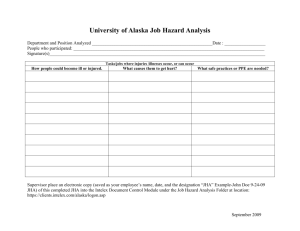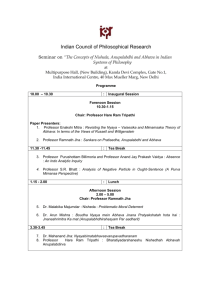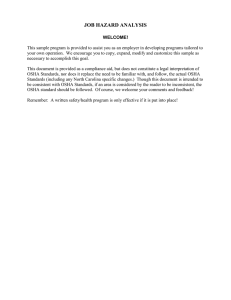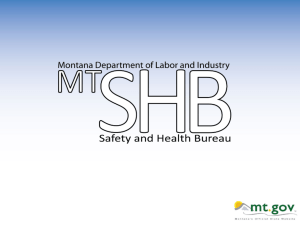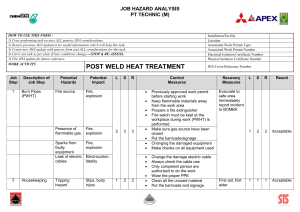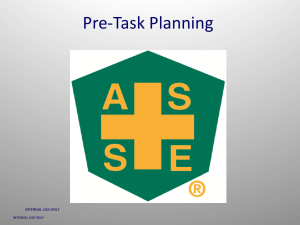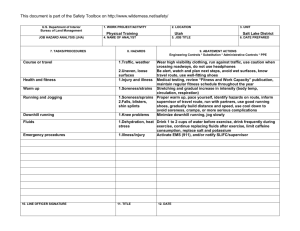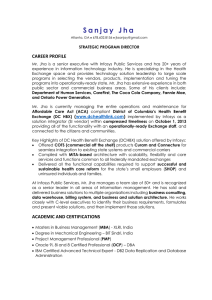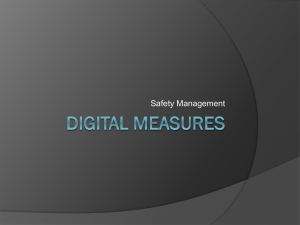Exercise Job Hazard Analysis | Steps in JHA EXERCISE #2 Target
advertisement
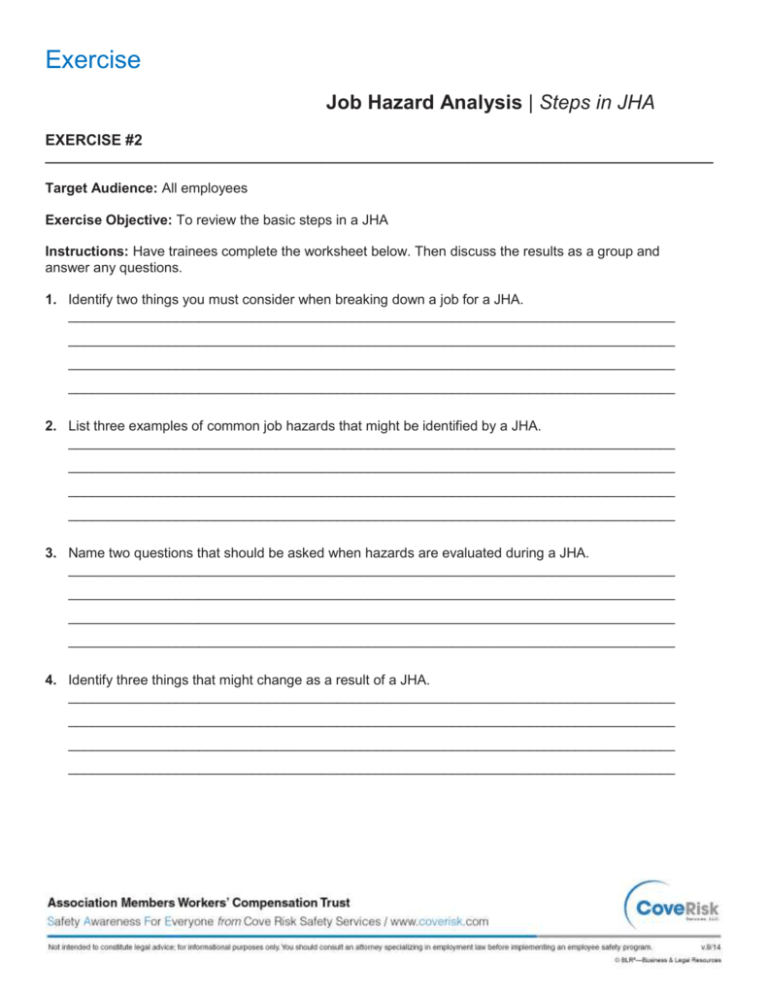
Exercise Job Hazard Analysis | Steps in JHA EXERCISE #2 _______________________________________________________________________________________ Target Audience: All employees Exercise Objective: To review the basic steps in a JHA Instructions: Have trainees complete the worksheet below. Then discuss the results as a group and answer any questions. 1. Identify two things you must consider when breaking down a job for a JHA. _______________________________________________________________________________ _______________________________________________________________________________ _______________________________________________________________________________ _______________________________________________________________________________ 2. List three examples of common job hazards that might be identified by a JHA. _______________________________________________________________________________ _______________________________________________________________________________ _______________________________________________________________________________ _______________________________________________________________________________ 3. Name two questions that should be asked when hazards are evaluated during a JHA. _______________________________________________________________________________ _______________________________________________________________________________ _______________________________________________________________________________ _______________________________________________________________________________ 4. Identify three things that might change as a result of a JHA. _______________________________________________________________________________ _______________________________________________________________________________ _______________________________________________________________________________ _______________________________________________________________________________ Exercise Job Hazard Analysis | Steps in JHA GUIDANCE _______________________________________________________________________________________ 1. To break down the job for a JHA, you have to: List each task in the order it’s performed Describe each action involved in performing each task Consider the conditions under which the job is performed Think about safety issues involved at each step in the job 2. Common job hazards that might be identified by a JHA include: Impact, such as from being struck by an object or falling and hitting the ground Penetration by sharp or pointed objects that cause cuts or punctures Caught between two objects, which can cause crushing or amputations Harmful airborne contaminants from chemicals, dust, mold, and so on Repetitive motions and awkward postures, which can cause musculoskeletal disorders, or MSDs Heat or cold Compression, which can cause broken bones, amputations, and other serious bodily damage Chemical exposures, such as getting chemicals on the skin or in the eyes or accidentally swallowing hazardous chemicals Optical radiation, which can cause serious eye damage and even blindness. 3. When hazards are evaluated, questions like these should be asked: Is this a safety or health hazard? Could this hazard cause an injury or illness? How serious is the risk? Is this hazard always present when the job is being performed or is it an intermittent hazard? Are engineering and/or administrative controls currently being used to prevent injuries and illness effective? Is the right PPE being used to protect against hazards? Is safety training creating sufficient awareness of the hazards and knowledge of the precautions that must be taken to prevent accidents? Are the protective measures currently in place adequate or are additional or different measures required to ensure safety? 4. As a result of a JHA: A job might be performed differently The work area or workstations might be reconfigured to make the job safer Less hazardous materials might be substituted There might be a switch from manual to mechanical techniques to reduce the exertion required to perform the job and prevent stress and strain injuries Safety training might be added, improved, or changed Tools or equipment might be changed PPE might be changed or added The most hazardous tasks might be performed less often
